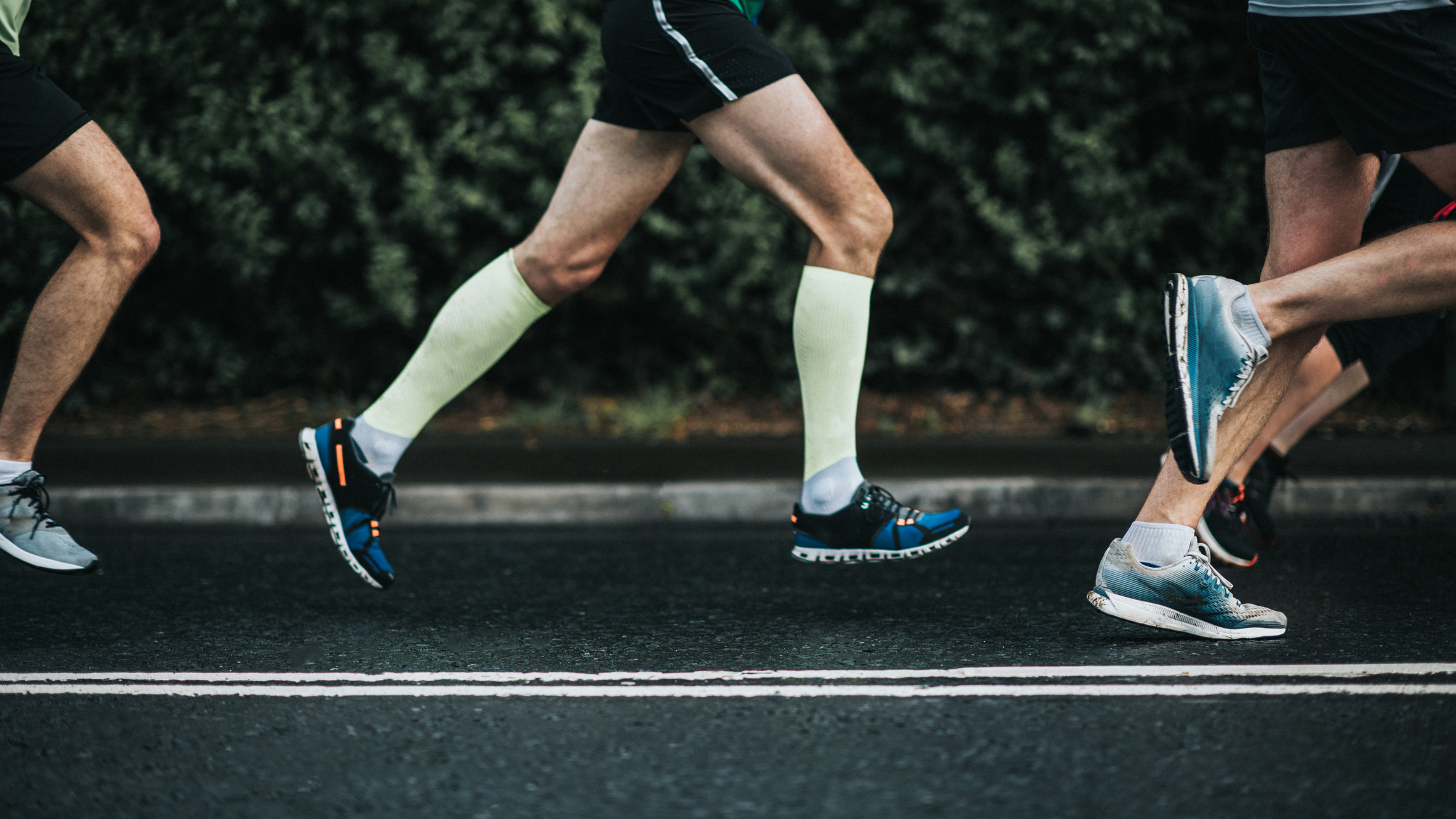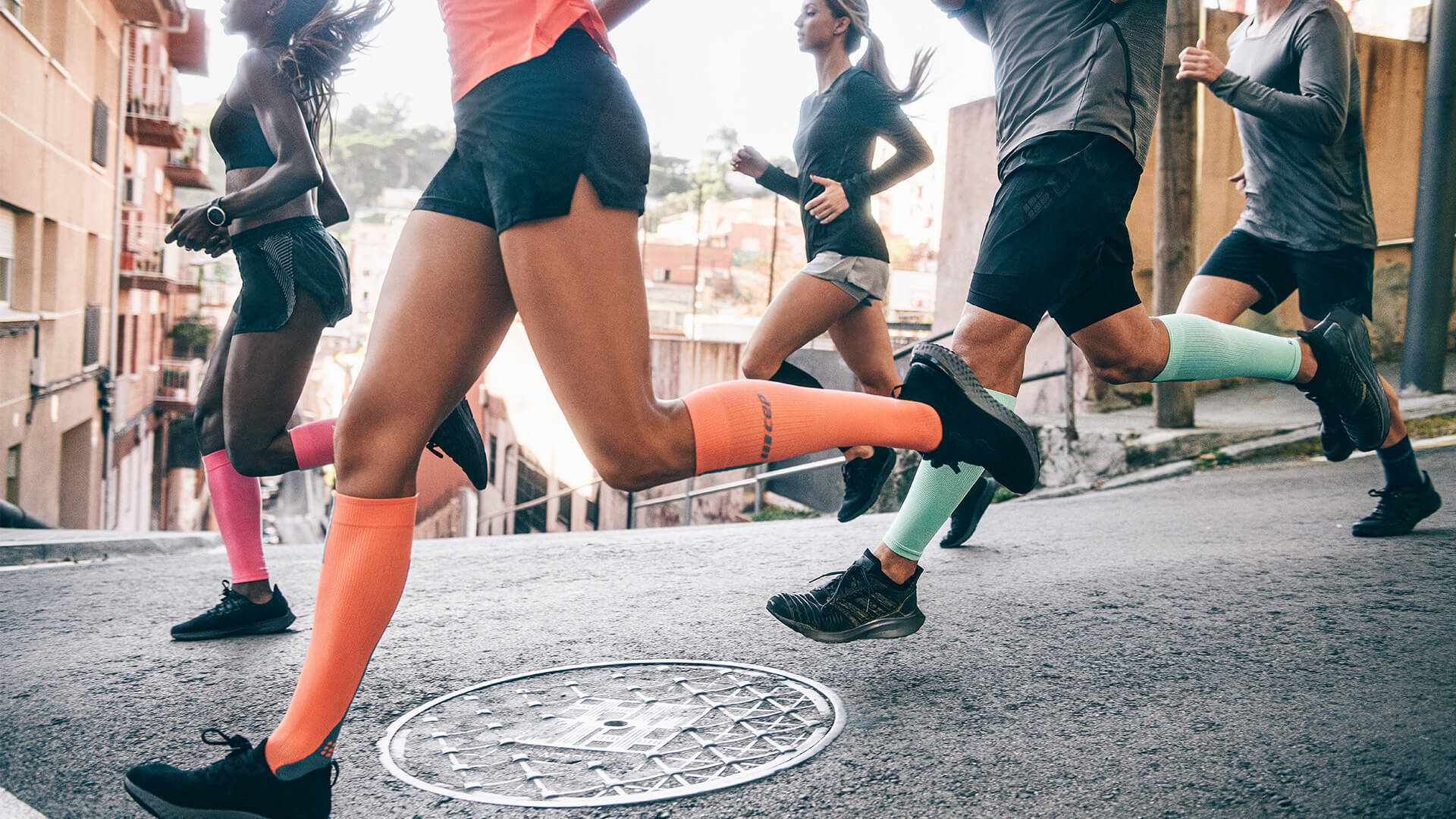4 benefits of compression socks for running, from improved oxygen delivery to protection
Should you wear compression socks for running? Here’s all you need to know


While many runners swear by wearing compression socks, especially during longer races, others will say there’s little evidence supporting the efficacy of compression garments if not worn for medical reasons (which is a whole different ball game). So should you wear compression socks? What are the benefits of wearing compression socks for sports and especially running?
Manufacturers of the best running compression socks claim their products have a range of benefits, including improved oxygen delivery and the prevention of swelling, all of which may or may not be true on an individual level. Our physiology varies significantly from others, not to mention running technique, so compression socks that work for us might provide the same benefits to others.
That said, a systematic review of 21 studies from 2020 said that “wearing compression socks (CS) during exercise improved performance in a small number of studies. However, wearing CS could benefit muscle function indicators and perceived muscle soreness during the recovery period.” The two takeaways here are 'perceived soreness' and 'recovery period'.
Perceived muscle soreness is how you feel your muscle was worked, which is admittedly different from how they actually were worked from a physical point of view. As for the recovery period, most compression socks for running work best when worn during and after strenuous running sessions. Please bear this in mind when using them. Here are some of the benefits that you might experience when wearing compression socks for running.
Compression socks for running improve oxygen delivery
It is said that wearing compression socks will speed up the delivery of fresh oxygen to the lower part of your legs. Compression socks can compress blood vessels (in a good way) which can result in the same amount of blood travelling in said vessels faster. This will help deliver fresh oxygen to and rid unwanted substances – such as lactic acid – from the muscles faster.

Prevent swelling
Running compression socks can help keep things together, especially the firm variety. During longer runs, especially in shoes with poor ventilation, your feet can swell significantly, which might cause discomfort, to say the least. Compression socks will prevent swelling to some degree, especially if they are worn not just for the duration of the run but also hours after the session has concluded.
Protection (from scratches and dirt)
Tired of having dirty ankles and calves because your shoes keep on touching the other leg as you run? Wearing long socks can prevent this from happening. Granted, you don’t need compression socks for this, but if you are wearing long socks, you might as well make them compression socks so you can benefit from improved circulation as well as having cleaner legs. Trail runners can benefit from this even more as they will encounter bushes and rocks more often that can scratch and bruise the skin.
Get all the latest news, reviews, deals and buying guides on gorgeous tech, home and active products from the T3 experts

Provide warmth
Here is an obvious one: by sitting close to the skin, compression running socks will keep your skin warm as you run. This is a great feature, especially when the weather is chilly and you need your muscles to bring their A-game. Warmer muscles will also reduce the risk of injury, but this doesn’t mean you can just skip warmup by wearing compression socks.

Matt Kollat is a journalist and content creator who works for T3.com and its magazine counterpart as an Active Editor. His areas of expertise include wearables, drones, fitness equipment, nutrition and outdoor gear. He joined T3 in 2019. His byline appears in several publications, including Techradar and Fit&Well, and more. Matt also collaborated with other content creators (e.g. Garage Gym Reviews) and judged many awards, such as the European Specialist Sports Nutrition Alliance's ESSNawards. When he isn't working out, running or cycling, you'll find him roaming the countryside and trying out new podcasting and content creation equipment.